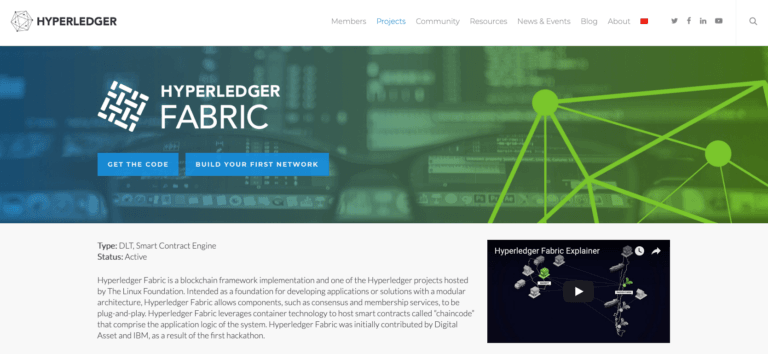On Monday (30 July 2018), IBM and CLS, an FX market solution provider, announced they are collaborating on a proof of concept (PoC) for LedgerConnect, a kind of “app store” for banks that operates on a private permissioned network based on the IBM Blockchain Platform.
Here is the argument IBM and CLS put forward (in a document produced by CLS called “Introducing LedgerConnect”) for using distributed ledger technology (DLT) in the financial services industry:
- “Capital markets are filled with multiple systems performing the same business functions with siloed data that needs expensive reconciliation steps throughout the process.”
- “Distributed ledger technology (DLT) helps greatly reduce these inefficiencies by ensuring that there is a single version of truth and a single implementation of common business functions.”
- “In addition to increasing business velocity via greater transparency and reducing friction, DLT can help transform existing business processes over the long term.”
They point, however, that “start-up costs for the growing number of high transaction-value production networks is prohibitive”, meaning that it is too expensive for each financial institution to develop its own DLT network, and that a better solution is needed. That solution is LedgerConnect. And here is how they see envision the LedgerConnect ecosystem:

They see the following benefits for “service users” of LedgerConnect:
- Easy application deployment: they can simply download and install apps from a central app store;
- Secure environment for finding/using blockchain apps: “private, permissioned network controlled by CLS”; “App security will be certified by CLS & IBM”;
- Robust infrastructure: LedgerConnect is hosted on the IBM Blockchain Platform (which offers “regional resilience and disaster recovery”, as well as high scalability);
- Reduced operational costs: this means reduced hardware costs, software licensing costs, software adoption costs, and network costs;
- Support for multiple asset classes (not only FX);
- Single version of truth: this means reduced overhead to manage financial data, as well as elimination of the need to reconcile financial data;
LedgerConnect is expected to bring operational efficiencies to front, middle, and back functions. Here are a few initial use cases in each of these areas:
- Front office: semantic smart contracts; KYC;
- Middle office: Consensus-based account and settlement instructions management; trade expense management;
- Back office: OTC trade matching; margin and collateral management;
Nine financial institutions, including Barclays and Citi, are taking part in the PoC, and they have selected services from a number of vendors including Baton Systems, Calypso, Copp Clark, IBM, MPhasis, OpenRisk, Synswap, and Persistent Systems to participate in the PoC.
Here are a few of the services/apps that will be available on the PoC:
- Sanctions screening (by Mphasis)
- Portfolio reconciliation (by Synswap)
- Semantic Smart Contracts and margin management (by OpenRisk)
- KYC (by IBM)
Initially, only aps built using Linux Foundation’s Hyperledger Fabric are supported, but additional ledger technologies may be supported in the future. According to American Banker, Keith Bear, Vice President of Global Financial Markets at IBM said: “Corda and the Hyperledger Fabric are where we’re seeing the most activity, at least in the banking and financial markets world.”
Alan Marquard, Chief Strategy and Development Officer of CLS Group had this to say:
“LedgerConnect is part of CLS's strategy to explore how we can provide safe and robust solutions that create efficiencies and reduce risk for a diverse range of firms operating in the financial markets. We expect LedgerConnect to deliver enhanced efficiencies and economies of scale over single-purpose distributed ledger networks.”
Another CLS employee, Ram Komarraju, Head of Innovation and Solution Delivery at CLS made the following comment about the “app store” concept:
“We’re trying to make sure there is one secure, robust and scalable network on which you already have a number of users and then, through the concept of an app store, app developers and service providers can deploy their services on top of this, so that banks get a regulated, trusted, secure market infrastructure and they don’t have to worry about vetting each individual vendor separately.”
As for IBM, Marie Wieck, General Manager of IBM Blockchain, stated:
“Together IBM and CLS have been early pioneers in advancing blockchain solutions for the financial services space… Building on the success of CLSNet and leveraging the strong relationship CLS has with the world’s leading financial institutions, LedgerConnect is uniquely positioned as a blockchain marketplace for the financial services industry, which will accelerate innovation across the ecosystem with value added services for blockchain networks.”
Following the completion of the PoC, generation of market demand, and receipt of all necessary regulatory approvals, CLS and IBM aim to make the LedgerConnect platform widely available to the financial services industry.
Featured Image Credit: Image Courtesy of The Linux Foundation








